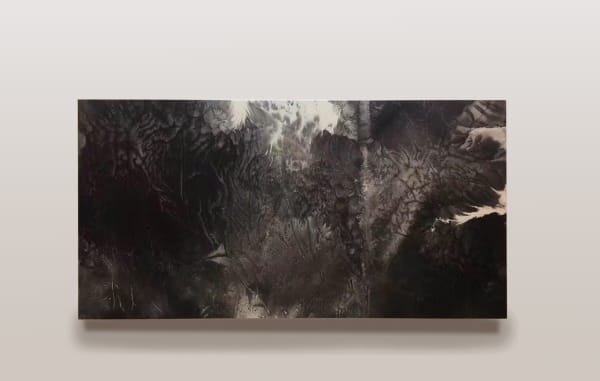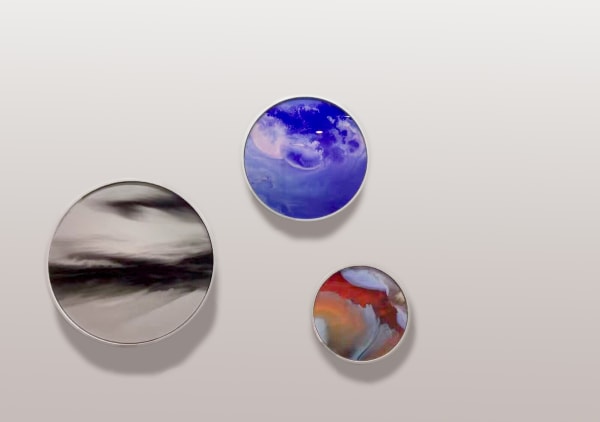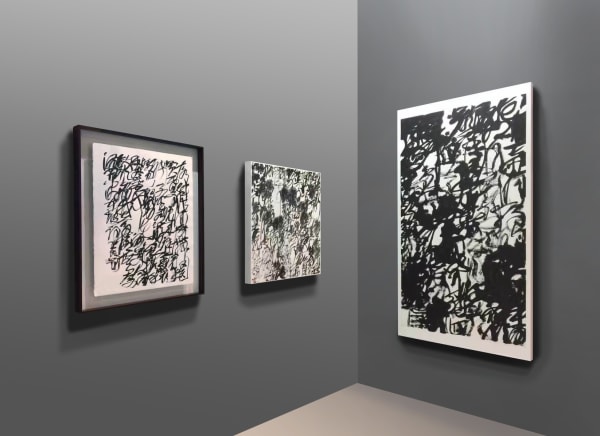Booth: A6
December 16-18, 2016
Hall 3G, Hong Kong Convention and Exhibition Centre, 1 Expo Drive, Hong Kong
As the premier Mainland Chinese art gallery specializing in experimental contemporary ink art, INK studio has regularly appeared in top-tier art fairs, including Art Basel Hong Kong and the Armory Show, and placed artworks with major museums such as the Metropolitan Museum of Art, Los Angeles County Museum of Art, and M+. INK Asia 2016 is INK studio’s first opportunity to engage the public in Hong Kong with its gallery program. We are excited to present a careful selection of works by seven leading artists— Bingyi, Huang Zhiyang, Li Huasheng, Li Jin, Cindy Ng, Wang Dongling, and Zheng Chongbin—organized around the theme of Brushwork After Brushwork, complemented by a public installation by Huang Zhiyang.
Brushwork After Brushwork
The notion of bimo (literally “brush and ink” but conventionally translated as “brushwork”) has been essential to Chinese aesthetics since its earliest articulations in the Han Dynasty, ultimately becoming the primary criterion for evaluating a work of art. In recent decades, however, brushwork has come under radical reevaluation and even rejection, most famously in Wu Guanzhong’s declaration that “brushwork is equal to zero.” This has created an opening for artists to approach brushwork anew—as materials, physical properties, aesthetic language, worldview, cultural symbol, moral value, or object of critique. INK studio has selected seven artists whose distinctive works reveal the range of contemporary approaches to the question of brushwork, from transformative embrace to critical rejection.
Wang Dongling (b. 1945)
In Chaos Script, his latest and most radical invention, renowned calligrapher Wang Dongling breaks away completely from the implied grid of traditional calligraphy and interweaves characters and entire columns into an virtually illegible field. Wang locates the expressive power of calligraphic brushwork in an embodied performance that directly reflects the xin or “heart-mind.”
Li Jin (b. 1958)
In his latest monochrome series, Li Jin embraces the anti-brushwork manners of the “splashed ink” painters of the Tang Dynasty, Chan (Zen) Buddhist painting, and self-consciously eccentric painters like Xu Wei and Bada Shanren. This iconoclasm in “brushwork” achieves a synergy with Li Jin’s choice of subjects: his oblique self-portraits evoke the extraordinary persona of the Six Dynasties and otherworldly arhats, and his still-life subjects are symbols of Chan Buddhism.
Li Huasheng (b. 1944)
Li Huasheng, one of the pre-eminent traditional landscape artists of his generation, stopped painting and became a recluse in the Himamalays after a visit to the United States in the 1980’s. Over the next decade, he developed the unprecedented practice of drawing vast grids in a state of meditative concentration, registering in virtuosic brushed lines every fluctuation in his body and mind. Li has since returned to traditional landscapes, but in abstract and minimalist manner. The disciplined brushwork of his grids and the freedom of his post-grid landscapes are mutually enabling.
Huang Zhiyang (b. 1965)
Huang Zhiyang’s Zoon-Dreamscape series expands his language of brush and ink to include pure gestural abstraction in the application of color. Drawing from the profound color symbolisms of Buddhism and other spiritual and mystical traditions, Huang’s work evokes a mental realm of sense, perception, feeling, emotion, memory, and consciousness.
Zoon-Beijing Bio: Spring No. 1 was first exhibited in Beijing during Huang Zhiyang’s 2014 joint solo exhibition at INK studio and the National Museum of China entitled The Phenomenology of Life. INK Asia will be the Hong Kong premier of Zoon-Beijing Bio: Spring No. 1 and the first time this seminal, monumental work will be seen outside of Beijing. More about this work
Zheng Chongbin (b. 1961)
Like Li Huasheng, Zheng Chongbin rejects both the representational and expressive functions of classical brushwork. But Zheng also removes the artist’s embodied presence and makes the vitality of matter itself directly perceptible, realizing nature’s entropic processes and fractal structures in the interactions of ink, acrylic, water, paper, and light.
Bingyi (b. 1975)
In her serial fan paintings Luminaries, Bingyi studies natural processes in microscopic scale and catalogues the multifold forms assumed by organismic life. Honed by a daily discipline in calligraphy, her brushwork embodies a generative expressionism and channels the loving power of nature in its crafting animate life from inanimate matter.
Cindy Ng (b. 1966)
In her highly experimental photographs, videos, and performances, Cindy Ng Sio Leng does not use a brush and removes her agency. Ink itself becomes the subject, agent, collaborator, and performer, even as its flow, dissolution, and liquid interactions with other materials evoke the Buddhist concepts of impermanence, emptiness, and conditioned arising.













